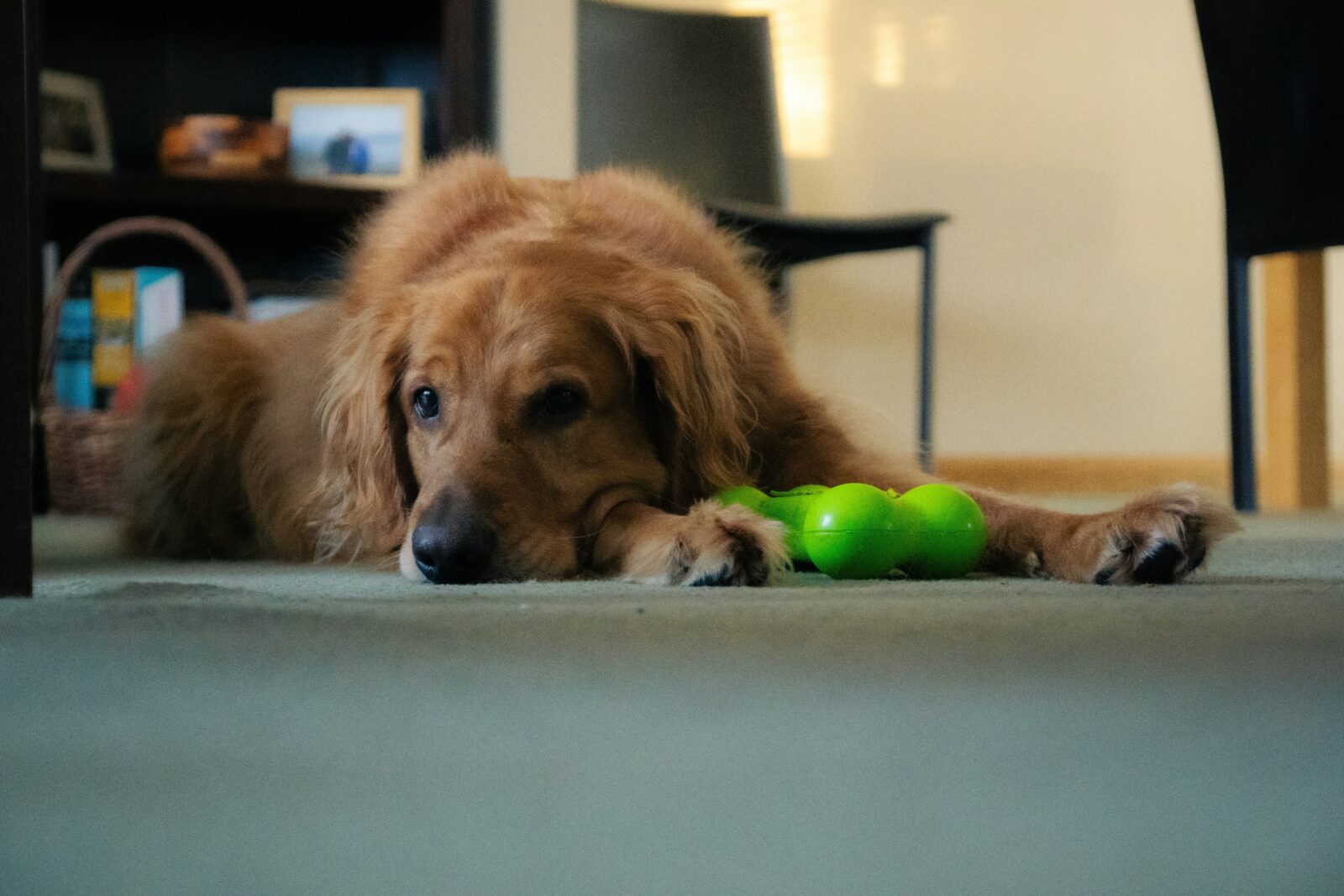Introduction
Dogs, much like humans, can experience stress and anxiety, whether from separation, changes in their environment, or other life events. Understanding how to support our canine companions during these times is crucial for their well-being. One effective and enjoyable way to help alleviate dog anxiety and stress is through the use of toys. This blog will delve into the various ways toys can be utilized to comfort stressed dogs and provide practical tips for choosing and using them effectively.
Understanding Dog Anxiety and Stress
Before we dive into how toys can help, it’s important to understand the signs of anxiety and stress in dogs. Common indicators include:
- Excessive barking or whining
- Destructive behavior
- Restlessness or pacing
- Withdrawal or hiding
- Excessive licking or chewing
Anxiety in dogs can stem from various sources, including separation anxiety, fear of loud noises, or changes in their routine. Identifying the root cause of your dog’s anxiety is the first step in choosing the right intervention.
How Toys Can Alleviate Dog Anxiety
- Distraction and EngagementToys can serve as a distraction from anxiety-inducing stimuli. Engaging toys, such as puzzle toys or interactive feeders, can keep a dog’s mind occupied, diverting their focus from stressful situations. This mental stimulation helps reduce the intensity of their anxiety and can prevent destructive behaviors.
- Comfort and SecuritySoft toys or comfort objects can provide a sense of security for anxious dogs. These toys often simulate the feeling of being with their owner or familiar scents, offering comfort during stressful times. Stuffed toys or blankets with your scent can be particularly soothing.
- Exercise and Physical ActivityPhysical activity is a great way to alleviate stress in dogs. Toys that encourage exercise, such as balls or tug toys, help release pent-up energy and reduce stress. Regular play sessions can also promote overall well-being and a more balanced mood.
- Chewing and Self-SoothingChewing is a natural behavior that can help dogs manage stress. Providing durable chew toys allows dogs to engage in this behavior in a constructive way, helping them to calm down and reduce anxiety. Chew toys also promote dental health, adding another benefit.
- Routine and FamiliarityIncorporating toys into a daily routine can create a sense of normalcy and predictability, which can be comforting to anxious dogs. Having a selection of toys that are regularly used can help establish a soothing routine, reducing anxiety related to changes or unpredictability.
Choosing the Right Toys for Anxious Dogs
- Interactive ToysToys that challenge a dog mentally, such as treat-dispensing puzzles or brain games, can be highly effective in distracting and engaging an anxious dog. These toys stimulate problem-solving skills and provide a sense of accomplishment.
- Comfort ToysSoft, plush toys or comfort objects can be beneficial for dogs who seek solace and security. Look for toys that are safe and washable, and consider using items with familiar scents to enhance their comfort.
- Chew ToysDurable chew toys are ideal for stress relief through chewing. Choose toys made from safe, non-toxic materials and ensure they are appropriate for your dog’s size and chewing strength.
- Exercise ToysToys that promote physical activity, such as balls, frisbees, or tug toys, can help manage stress by providing an outlet for energy. Regular playtime with these toys can help reduce overall anxiety levels.
- Soothing ToysSome toys are designed specifically to help with relaxation. These may include toys with calming scents or those that make gentle noises. They can provide a calming effect and help soothe an anxious dog.
Tips for Using Toys to Alleviate Dog Anxiety
- Rotate Toys RegularlyTo keep your dog engaged, rotate their toys regularly. This prevents boredom and maintains their interest, providing continuous mental stimulation and comfort.
- Monitor PlaytimeSupervise your dog during playtime, especially with new toys, to ensure they are safe and used correctly. Ensure that toys are in good condition and replace any that are worn or damaged.
- Incorporate Toys into TrainingUse toys as rewards during training sessions to build positive associations. This can help reduce anxiety by creating a structured and rewarding environment.
- Create a Safe SpaceDesignate a quiet, comfortable area in your home where your dog can retreat with their toys. This can be their safe haven during stressful times, offering a sense of security and comfort.
- Observe Your Dog’s PreferencesPay attention to which toys your dog prefers and tailor their toy selection to their individual needs. Some dogs may prefer chew toys, while others may find comfort in plush toys or interactive games.
Conclusion
Toys play a crucial role in alleviating dog anxiety and stress by providing distraction, comfort, and engagement. By choosing the right types of toys and using them effectively, you can help your dog manage their anxiety and improve their overall well-being. Remember to observe your dog’s preferences and needs, and incorporate toys into their daily routine for the best results.










Leave a Reply